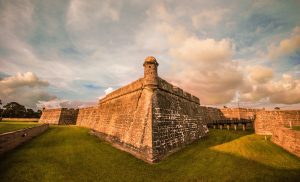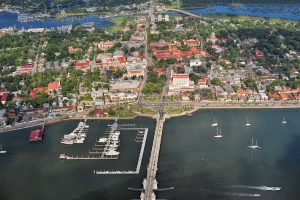St. Augustine, Florida, Oct 4 (EFE).– The city of St. Augustine, Florida, will commemorate the Day of the Dead with a series of events with a marked Hispanic flavor including parades like the ones that are held each year in Mexico.

Starting Oct. 27, the Florida Living History non-profit – together with the association to preserve the Tolomato Cemetery – will organize a number of events with an eye toward transforming the Day of the Dead into one of the most attractive features of the oldest city in the United States.
The events will focus on displaying historical costumes and dishes linked with a far-from-macabre tradition that is still alive within the Hispanic culture and which in Mexico has become one of the year’s main celebrations.
A group of volunteers will be in charge of portraying noteworthy historical figures buried in the Tolomato Cemetery, one of the oldest in the US.
In the evening, there will be a torchlit procession through downtown St. Augustine, the traditional March of the Holy Company, with actors representing the souls of honorable and faithful residents of the city founded by the Spaniards 453 years ago.
The event will conclude with an abridged candlelight production of the romantic drama “Don Juan Tenorio” (1844), by Spain’s Jose Zorrilla, which is traditionally performed in Spain and other Spanish-speaking countries as part of the Catholic festival of the Day of the Dead, Nov. 2.

The work, the final act of which takes place in a cemetery and includes religio-fantastic elements, illustrates the saving power of love over death.
Founded by Spanish Adm. Pedro Menendez de Aviles in 1565, St. Augustine is a city rich in Hispanic tradition and culture, as evidenced by the Day of the Dead festival.
The Day of the Dead, which is celebrated on the same day as Halloween, has a different and special meaning in St. Augustine, with historical events and festivals.
The best-known version of the Day of the Dead ceremonies is in Mexico, where those who have departed this world are honored with rituals combining elements of the pre-Hispanic peoples with Catholicism, the religion introduced by the Spanish conquistadors.
The celebration acknowledges death as a natural part of the human experience and makes the dead part of the community, given that – according to this belief – they awake briefly from their eternal dreaming to enjoy life once again with their loved ones.
